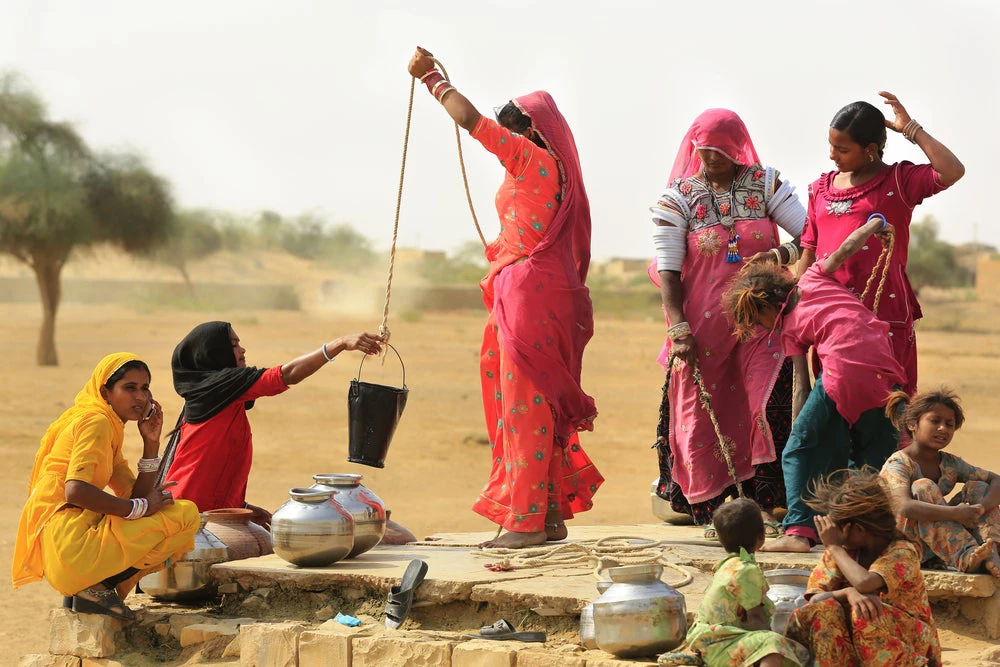 Women in Jaisalmer India draw water from the well
Women in Jaisalmer India draw water from the well
South Asia is home to some of the world’s countries most vulnerable to climate change.
In the past decade alone, nearly 700 million people-- half of the region’s population-- were affected by one or more climate-related disasters.
Now, changing weather patterns are expected to impact directly over 800 million people by 2050 and will continue to burden South Asian countries’ economies.
Between 2000 and 2017, disasters caused by natural hazards in the region caused damages worth $149.27 billion (Calculations based on Em-Dat data).
South Asia is home to some of the world’s countries most vulnerable to climate change
Communities in climate-vulnerable areas are stuck. Before they can recover from a disaster caused by natural hazards, another one strikes, reversing any progress made.
To end this cycle, South Asian communities need to build greater resilience.
As they confront the exorbitant cost of disasters, South Asian governments are beginning to realize the benefits of resilience.
But to become climate-resilient, the region needs to adopt ambitious policies and strengthen planning.

As rising global temperatures change the monsoon and cyclone patterns in South Asia, the impact on economic growth will only worsen.
To achieve that goal, the World Bank’s South Asia Regional Climate Adaptation and Resilience Program (SARCAR) will equip governments with the data and evidence they need to tackle climate change threats.
The program will also facilitate regional collaboration to help develop standards to inform national climate resilience actions, strategies, and investments.
This joint approach is critical as climate change knows no boundaries.
Let’s take the example of melting glaciers.
The more than 25,000 glaciers in the Karakoram-Hindu Kush-Himalaya mountain range, which spans eight countries from Afghanistan to Myanmar and provide water and energy to 1.9 billion people, are retreating fast.
But despite this urgency, South Asian countries have yet to come together to address the enormous—and common—challenges caused by their disappearing ice and snow covers.
The more than 25,000 glaciers in the Karakoram-Hindu Kush-Himalaya mountain range that provide water and energy to 1.9 billion people, are retreating fast.
Furthermore, agriculture, the primary source of income for a majority of South Asians, is highly vulnerable to climate change, but farmers often don’t know how to cope with the effects of natural disasters.
This effort includes sharing standards for resilient infrastructure and services to help South Asian communities better address their specific hazards and vulnerabilities.
As part of the World Bank Action Plan on Climate Change Adaptation and Resilience, a bold new initiative to boost direct adaptation climate finance by $50 billion in 2021–25, our goal is that SARCAR will benefit governments, farmers and communities from Afghanistan to Maldives and empower them to build resilience and preserve their livelihoods.





Join the Conversation